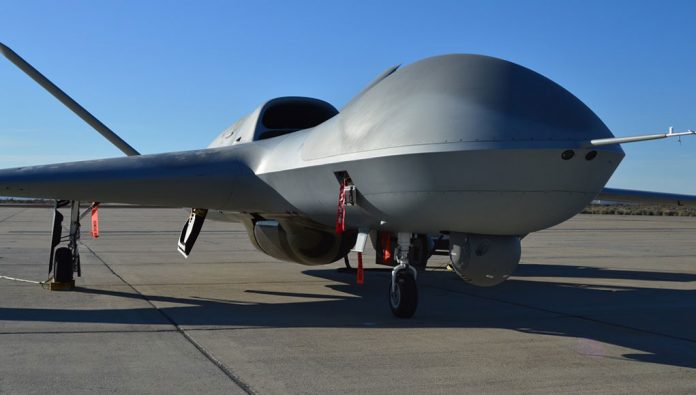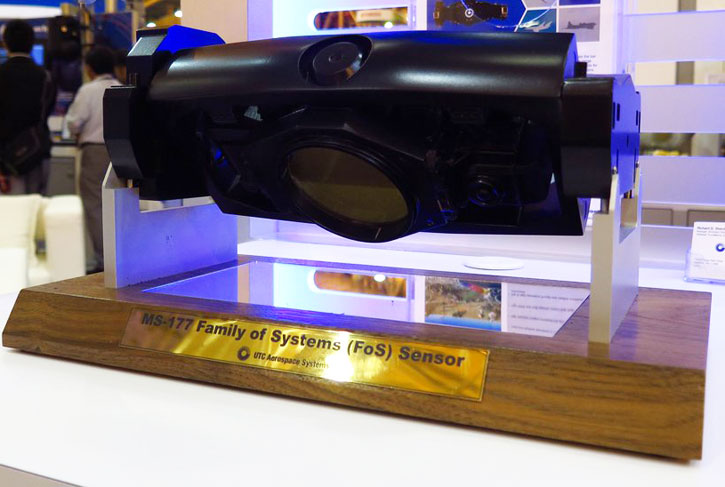
General Atomics Aeronautical Systems Inc. (GA-ASI) will begin flight testing of an Improved Avenger in October 2016. This enhanced version of the semi-stealthy drone will enhance the Avenger’s capabilities on long endurance intelligence gathering missions carrying the new MS-177 Electro-optical/Infrared (EO/IR) sensor recently demonstrated in flight. With an increased wingspan of 23 meters (76 feet), the improved Avenger will extend the aircraft’s endurance from 15 hours to 20 hours, thus increasing the utility of this strategic reconnaissance collector over a longer period and extended range.
The Avenger that first flew in April 2009 is powered by a single Pratt & Whitney Canada PW545B turbofan engine. Its airframe has some stealth features, including an internal weapons bay that can carry up to 1,600 kg (3,500 pounds) of internal payloads. This payload bay accommodates the new reconnaissance sensor. In addition, the Avenger has six external hardpoints carrying additional ordnance for a total weight of 2,900 kg (6,500 lbs) payload total. With a maximum speed of 740 km/h (460 mph), the Avenger is significantly faster than other propeller-powered Predator family drones (482 km/h – 300 mph).
According to GA-ASI, the Improved Avenger will provide an optimal balance of long loiter ISR and precision strike capability, supporting a wide array of sensors and weapons payloads to perform fast, long-endurance, multi-mission ISR and ground support missions.
This is an excerpt of the 754 word article – Subscribe to read the full version
According to UTAS, the MS-177 is more technically advanced than the SYERS 2 flying on U-2 aircraft and also is significantly more affordable to manufacture. The sensor is a 7-band multispectral system that can be upgraded to a 10-band system to enhance target detection for maritime applications. The MS-177 has a wider field of view than its SYERS-2 predecessor. With a 90° roll and 25° pitch, it covers 37,000km² (14,300 miles²) per hour of flight.
Apart from the recent Avenger tests the sensor have also demonstrated compatibility with the Global Hawk, P-3, Boeing P-8A Poseidon and at least one business jet.





















